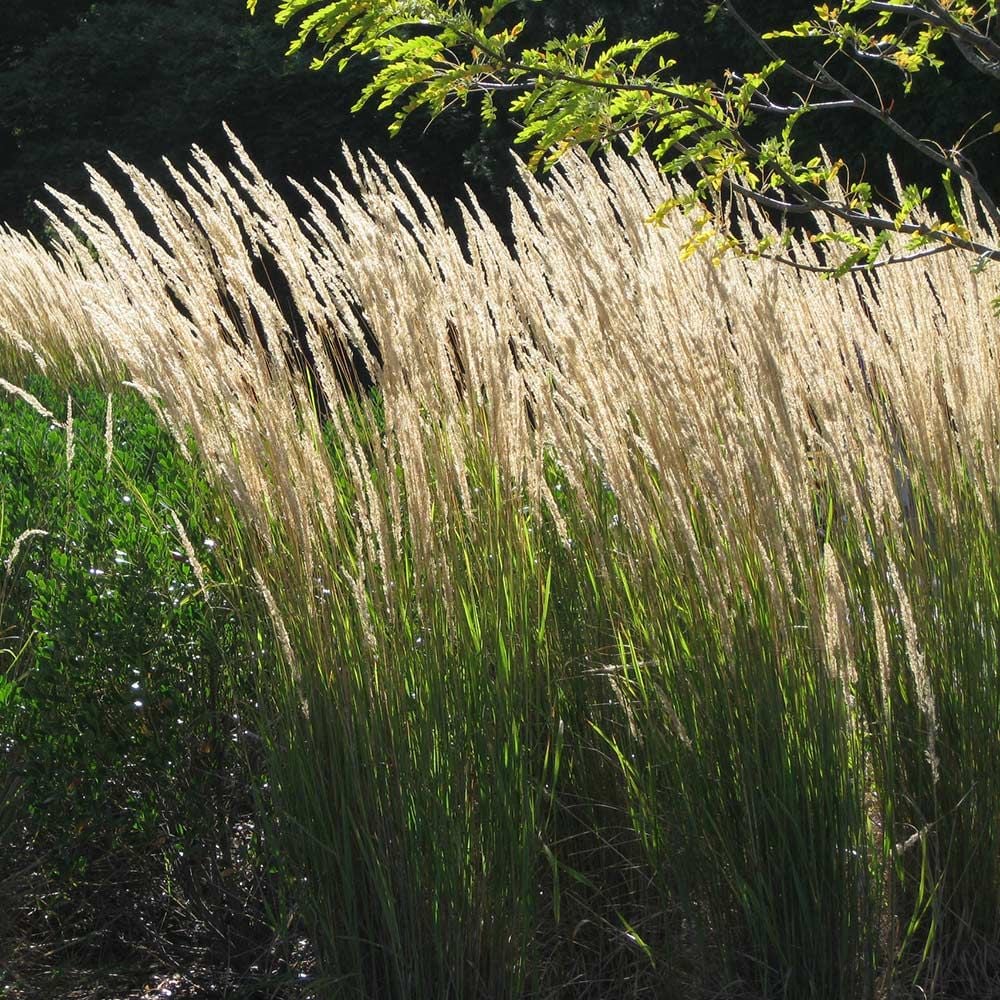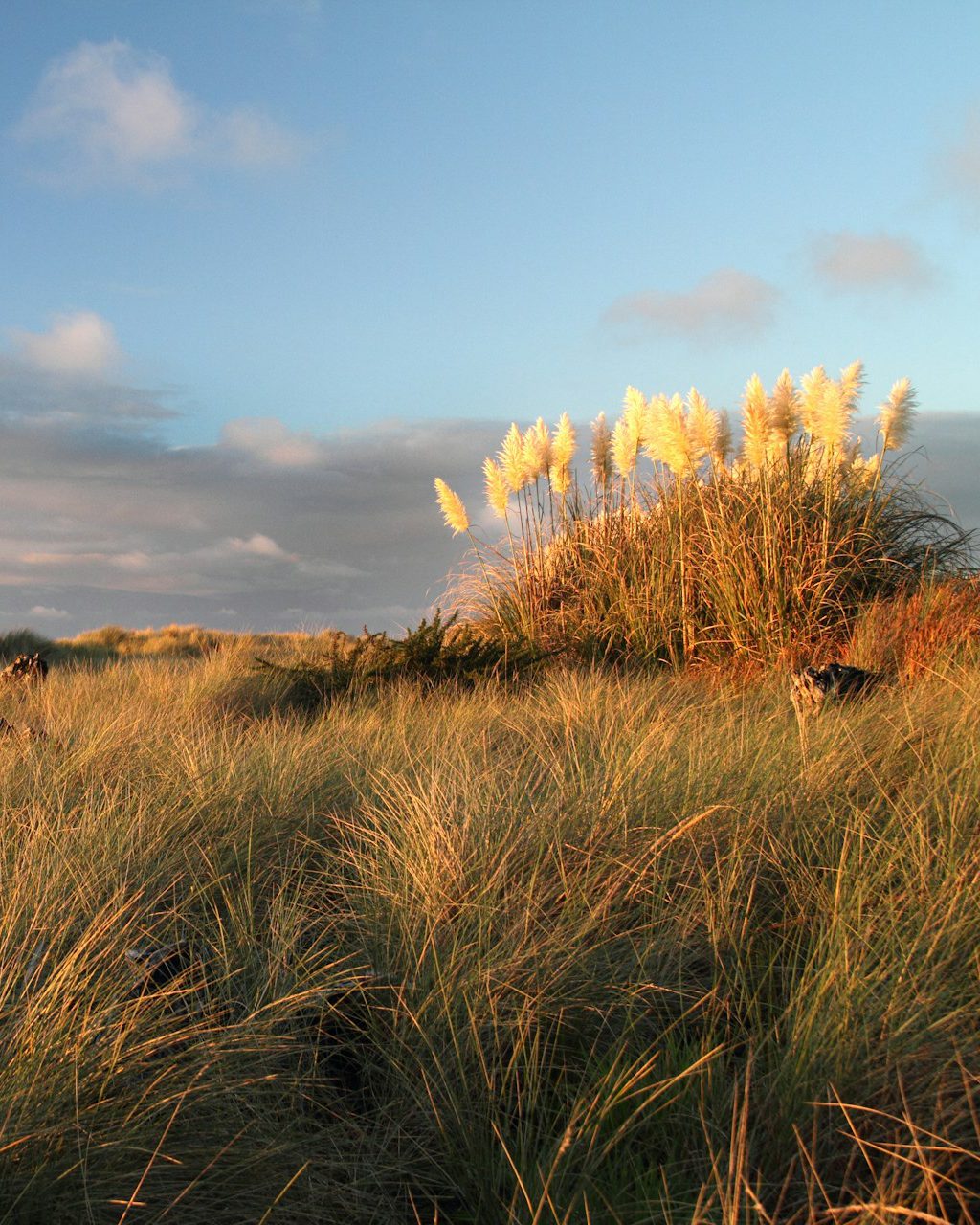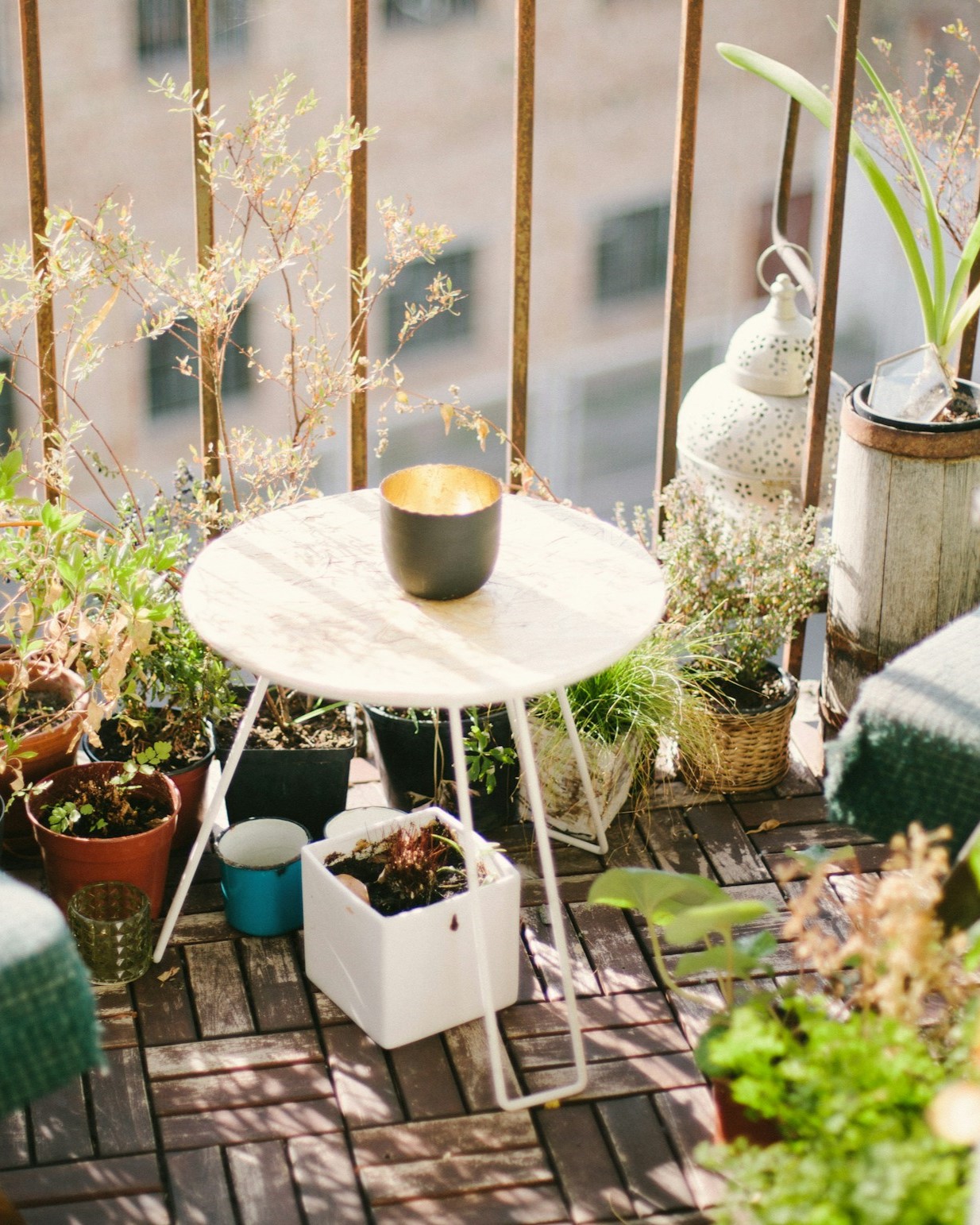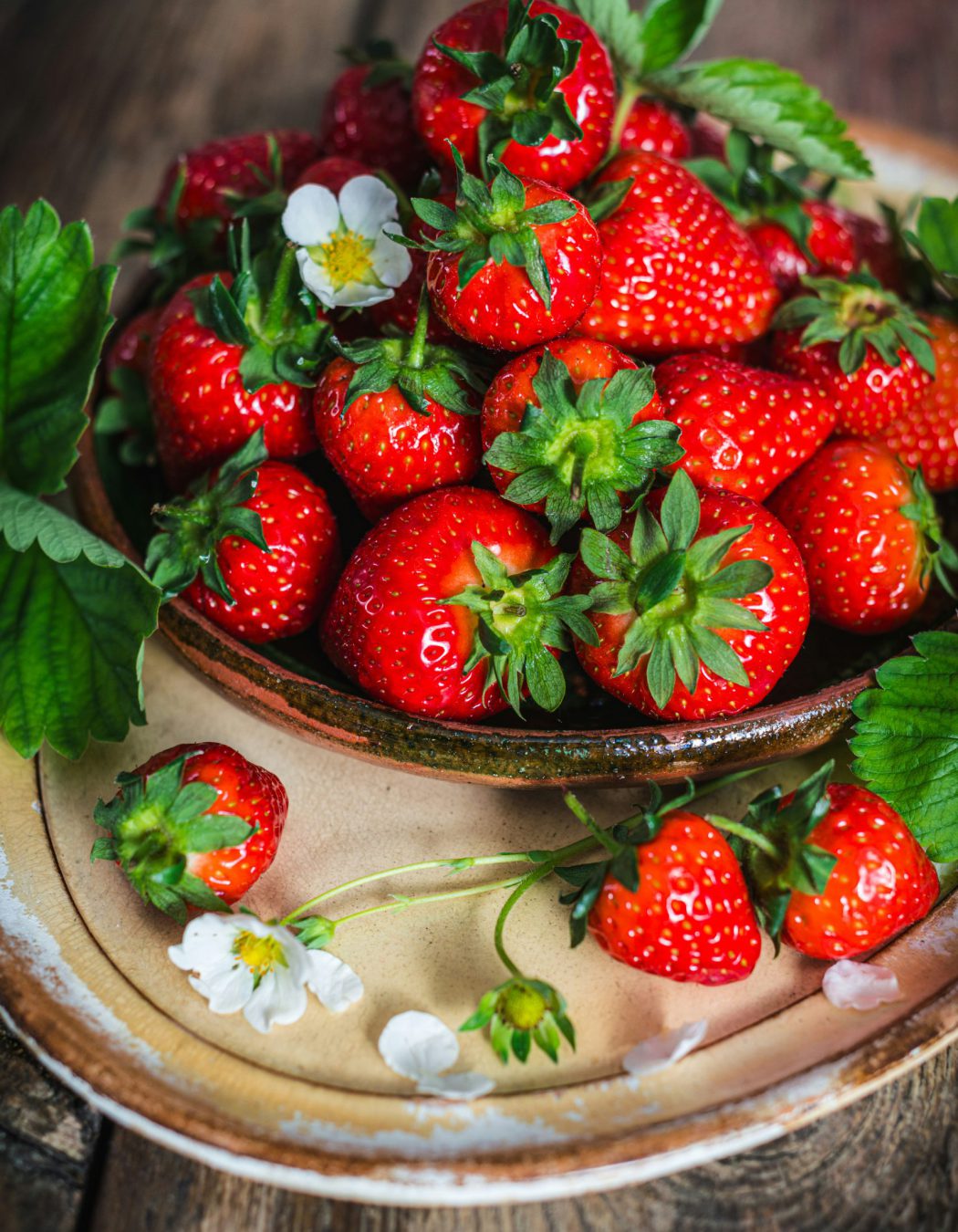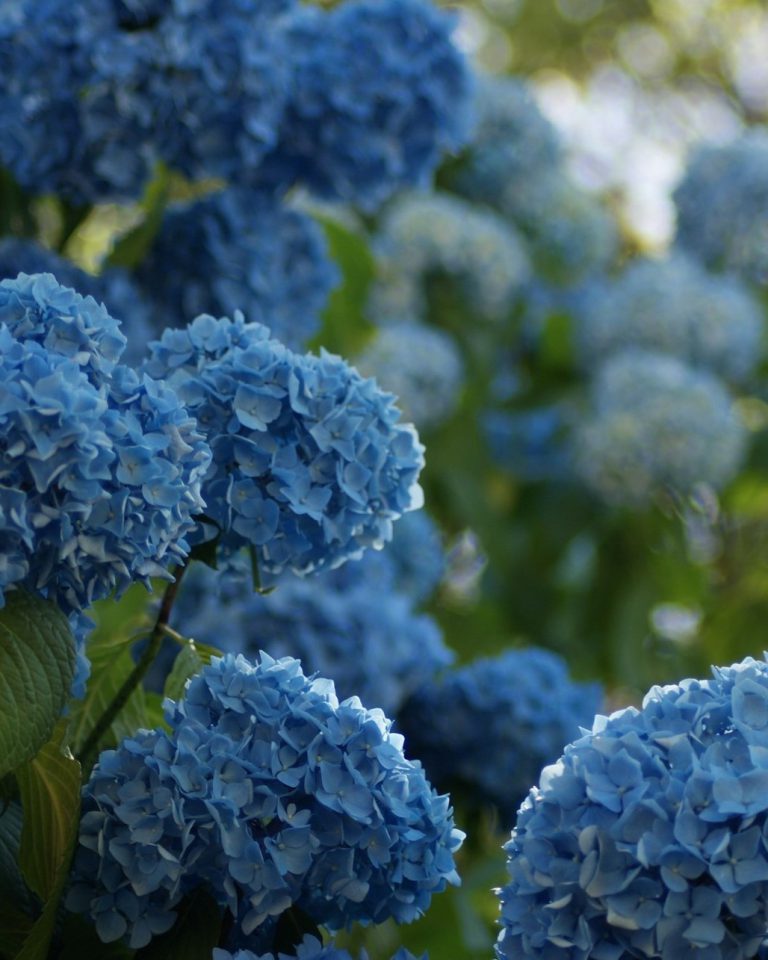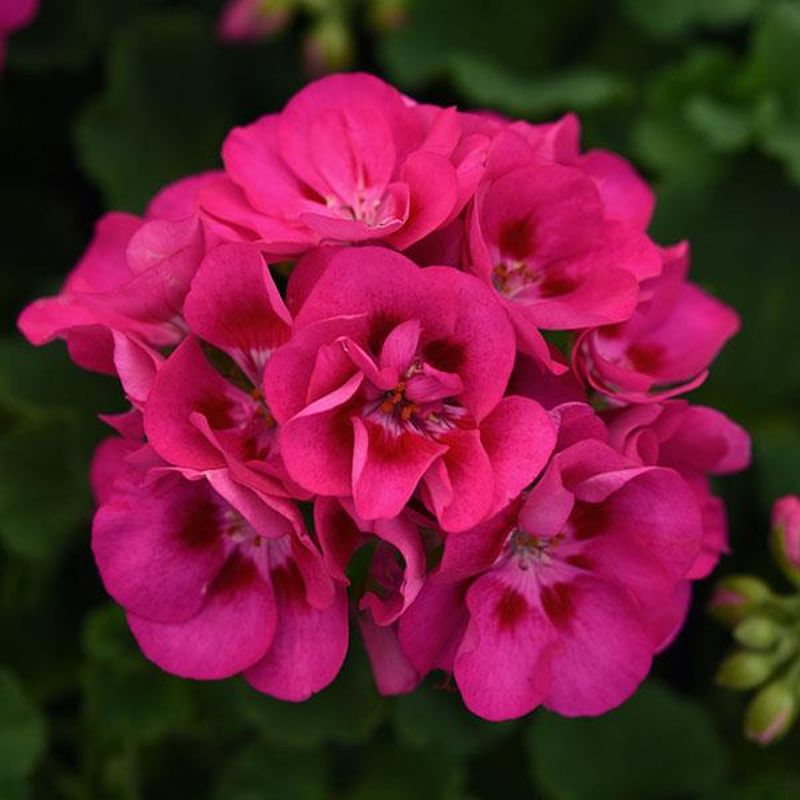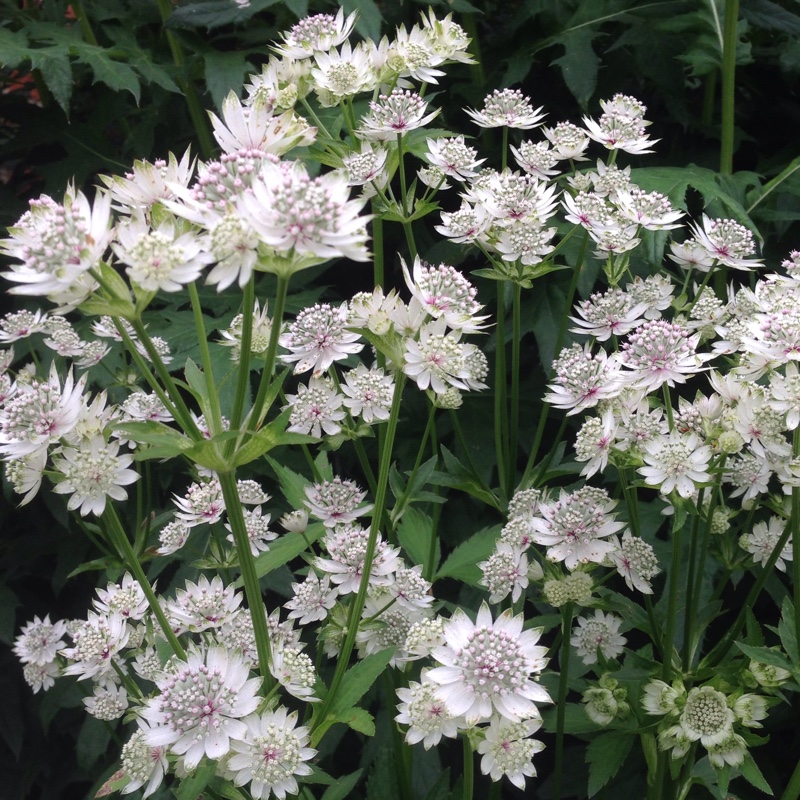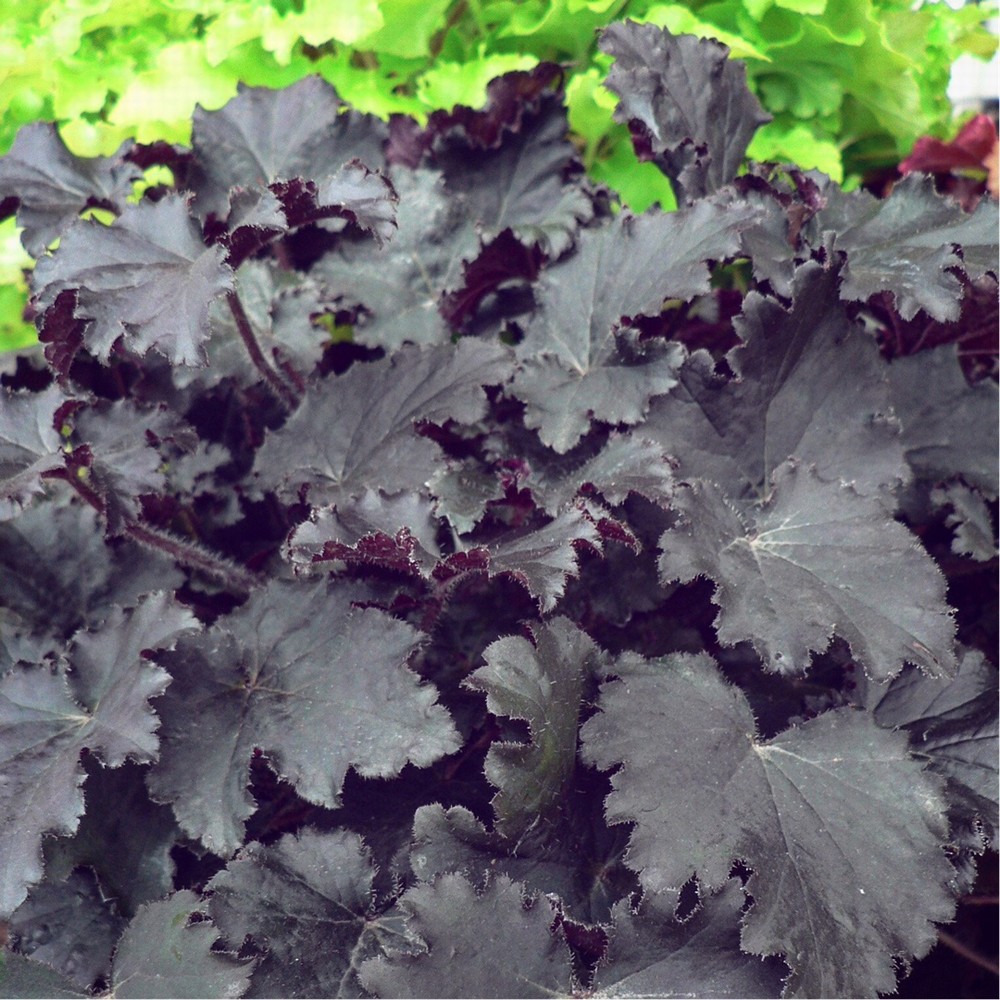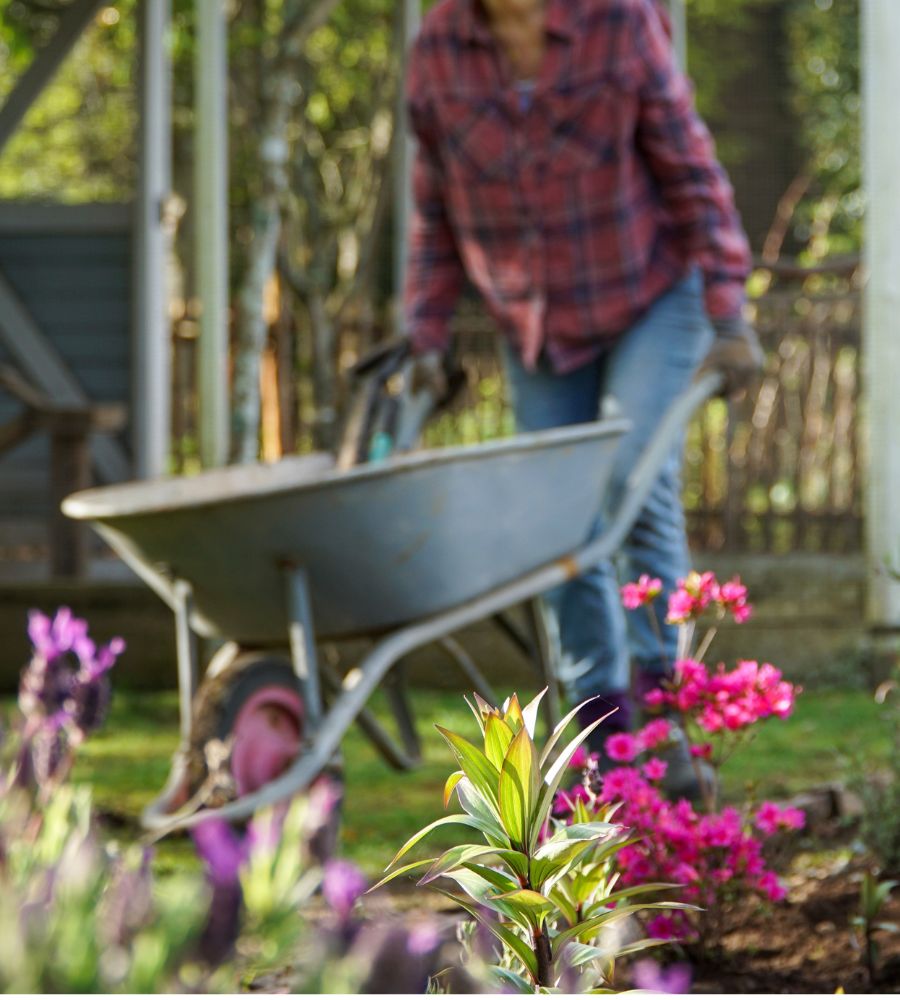
Eleanor Clarke
oUTDOOR PLANTING
How to plant a border
When you’ve a new space to fill or you’re making a garden from scratch, facing all that undug earth can be overwhelming. What will look good? What will do well? What plants to avoid? Where even to begin? But never fear: we’ve done it more times than we remember, so you can leave the big questions to us, then concentrate on a little light digging and watering on the big day. Here are the answers to some of those burning border questions…
When’s the best time of year to plant?
There are two ideal planting seasons when it comes to shrubs and herbaceous perennials (which is what you’ll be relying on if you’re planting up a border): spring or autumn. Mainly because they’re two of our most reliably wet seasons, meaning your plants will settle in and get their roots down quickly. That doesn’t mean you can’t plant in summer – you can, but you just need to be more careful about frequent watering as plants won’t get their feet into deeper, damper soil until autumn at the earliest.
How should I prepare the soil?
The answer to this depends on its current state. If you’re turning a patch of lawn or weeds into a flower border, you’ll need to remove the turf and get rid of all the weeds. Probably the best way is with garden spade, fork and hard work, digging down to a couple of spade depths and removing large stones while you’re at it.
variegated fatsias and, for late summer into autumn, Japanese anemones. All of them dazzle – and thrive – in shade.
Should I add soil improver?
If your soil is heavy clay, like most of London, dig in plenty of organic matter to improve drainage. Most plants hate to sit in waterlogged soil over winter. Your organic matter could be homemade garden compost, composted bark, leaf mould, well-rotted manure or a proprietary ready-mixed soil improver. Be generous if you plan to plant Mediterranean sun lovers such as lavender, rosemary, thyme and irises – although you can boost drainage even further by adding strategic handfuls of grit under specific plants when you put them in. If you’re lucky enough to have soil is light, friable and crumbles easily between your fingers, then add a bit less. It’s not an exact science.
How do I put together a planting scheme?
First, know your own tastes. Do you like Mediterranean vibes? Or perhaps a cottage garden theme? Contemporary or rustic? Exotic and leafy or light and airy? Cool and green or bright and flower-packed? Woodland vibes or seaside retreat? All of these styles can be recreated in the average London garden if you know what you want to achieve and choose the right plants, but always include evergreens for year-round interest, and species that grow to different heights. Then remember to plant in groups for impact (more of the same is more effective than fewer of more plant species). Ideally arrange in groups of three, five or seven of the same plant (odd numbers somehow look more natural). Here are five key plants for five different planting styles, providing evergreen interest, height and ground cove
- Hot, Mediterranean border
Lavender (eg Lavandula angustifolia ‘Munstead’) , Upright rosemary (Rosmarinus officinalis), Mexican feather grass (Stipa tenuissima), Salvias (eg Salvia ‘Amethyst Lips’), Lamb’s ear (Stachys byzantina)
- Romantic cottage garden
Californian lilac (Ceanothus), Lupins (in deep red, pink and white), Shrub or climbing roses (eg Rosa ‘Constance Spry’), Hardy geraniums (eg Geranium ‘Rozanne’), Mexican fleabane (Erigeron karvanskianus)
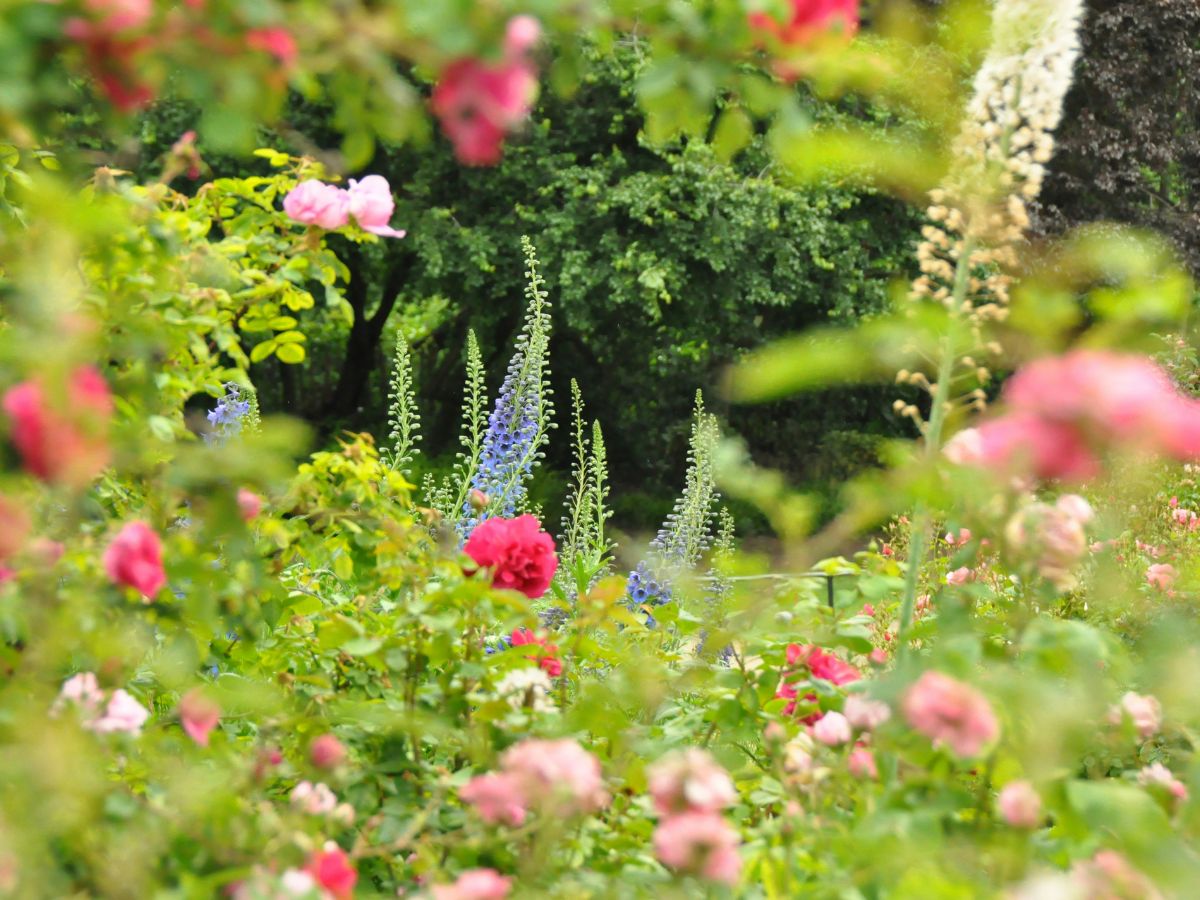
- Romantic cottage garden
Californian lilac (Ceanothus), Lupins (in deep red, pink and white), Shrub or climbing roses (eg Rosa ‘Constance Spry’), Hardy geraniums (eg Geranium ‘Rozanne’), Mexican fleabane (Erigeron karvanskianus)
3. Light and airy
Zebra grass (Miscanthus sinensis ‘Zebrinus’), Blue oat grass (Helictotrichon sempervirens), Russian sage (Perovskia ‘Blue Spire’), Burnet (Sanguisorba ‘Tanna’), Sea holly (Eryngium)
- Woodland vibes
Juneberry (Amelanchier lamarckii), Periwinkle (Vinca minor), Foxgloves (Digitalis), Masterwort (Astrantia), Hart’s tongue fern (Asplenium scolopendrium
5. Exotic and leafy
Black bamboo (Phyllostachys nigra), Japanese aralia (Fatsia japonica), Elephant ears (Bergenia cordifolia), Male fern (Dryopteris affinis), Heucheras (eg in deep plum, zingy marmalade or claret colours)
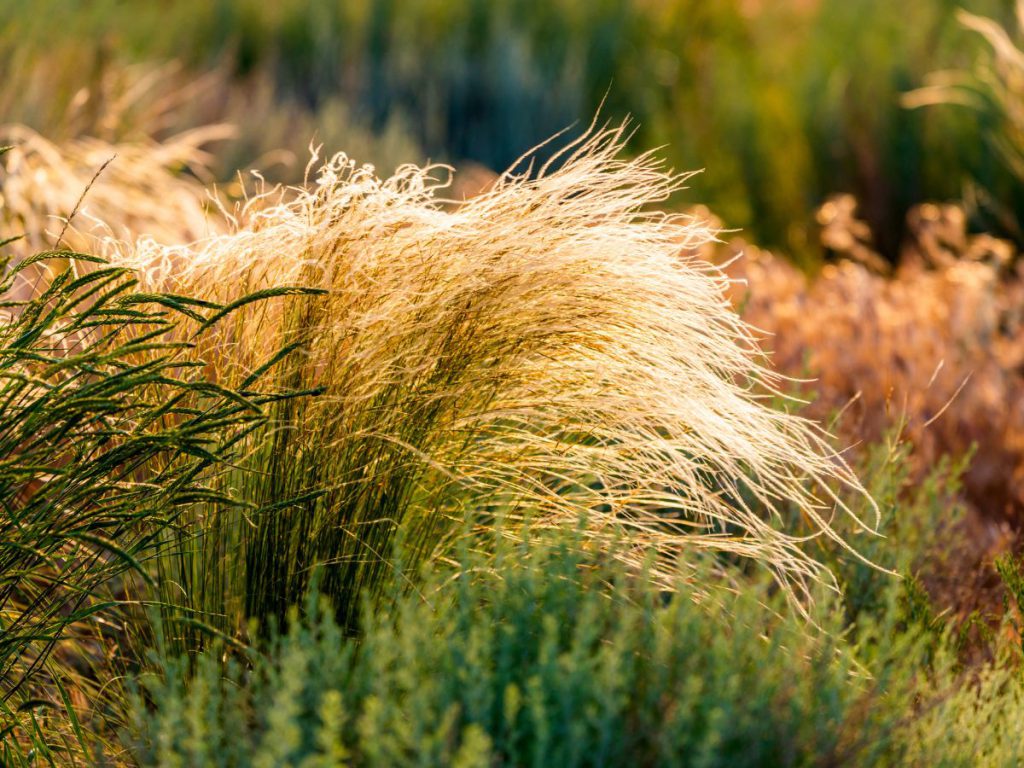
Sun or shade?
This is a biggie. It really matters. Please don’t go planting sun lovers like lavender along a north-facing fence (or even an east-facing one. Lavender needs LOTS of sun).
Equally, don’t pop a cool customer like Fatsia in a sunny flowerbed (it’ll turn pallid and sulk). Buy plants to suit your space your soil, your levels of sunshine and they’ll thrive and delight. Trust us, there’s no point hoping for the best if they’re not in the right spot. So read the labels, do your research, then you’re more than halfway to success. The first three planting schemes above need plenty of sun, so a south or west facing border; the last two will do well in shade or semi-shade, although black bamboo needs a decent amount of sun for the canes to colour up nicely. So arrange the individual plants within your allotted space bearing this in mind.
This is a biggie. It really matters. Please don’t go planting sun lovers like lavender along a north-facing fence (or even an east-facing one. Lavender needs LOTS of sun).
Equally, don’t pop a cool customer like Fatsia in a sunny flowerbed (it’ll turn pallid and sulk). Buy plants to suit your space your soil, your levels of sunshine and they’ll thrive and delight. Trust us, there’s no point hoping for the best if they’re not in the right spot. So read the labels, do your research, then you’re more than halfway to success. The first three planting schemes above need plenty of sun, so a south or west facing border; the last two will do well in shade or semi-shade, although black bamboo needs a decent amount of sun for the canes to colour up nicely. So arrange the individual plants within your allotted space bearing this in mind.
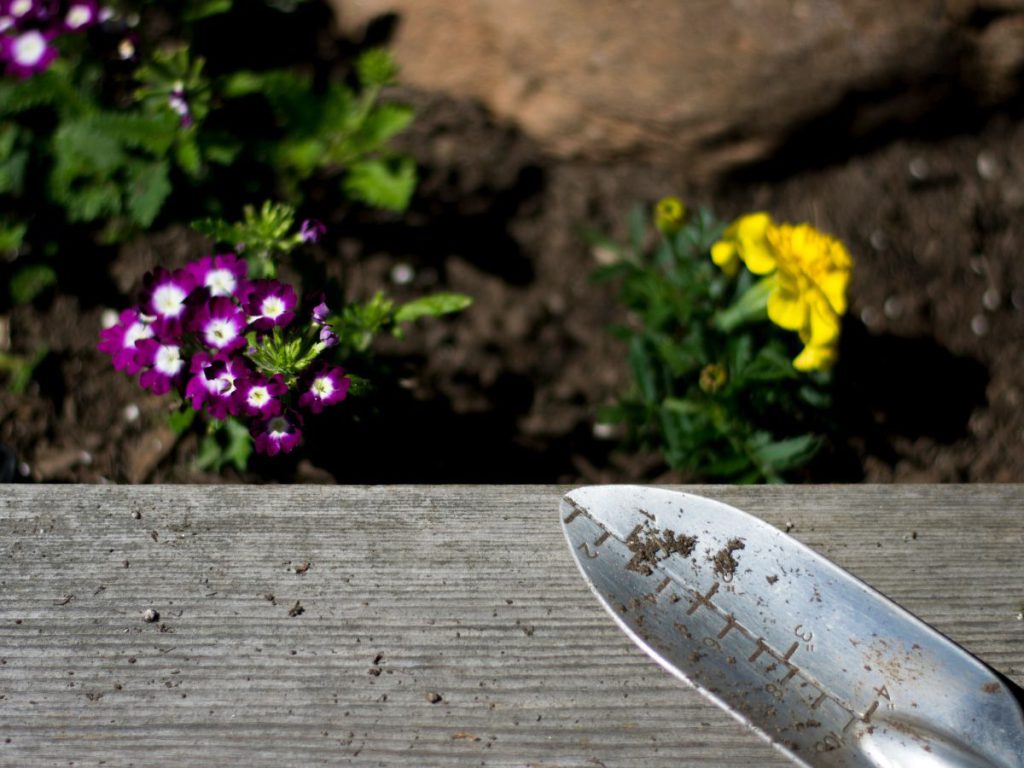
How to plant
Once you’ve made got your plants home, don’t wait too long to get them in. If they’re at all dry in their pots, give them a good soak first – in the kitchen sink, in the shower, wherever’s easiest. Then it’s time to place your plants. Here it’s important to remind yourself of the eventual spread of each plant and place accordingly. Sure, things will look a bit gappy to begin with, but your plants will soon knit together – and a few gaps at the start is much better than planting too close together, with some eventually getting swamped and crowded out. Arrange in groups of the same plant, weaving one group gradually into the next, and following a loose format of tallest at the back, shortest at the front. Loose is key, though: occasionally break the mold with a taller plant towards the front of the border, or you’ll risk a look that’s a little too planned and neat.
When you get your plants out of their pots, it the roots are tightly packed, loosen them with your fingers so they can spread out easily into the soil. Then sit them on the soil and go and have a cuppa. Or a glass of wine.
If you still like what you see when you’re back, it’s time to plant. If not, tweak your arrangement til you’re happy, then dig holes a little deeper than each plant, backfilling with soil until each plant sits at the same level as it did in the pot. Exceptions to this rule are roses, which should sit an inch or so deeper. If you’re putting in plants that love hot, dry, free-draining soil, dig a little deeper and add a good scoop or two of horticultural grit to the planting hole and to the soil you return to the hole. This will help to recreate those Mediterranean conditions on clay. Firm them in gently but well to get rid of air pockets. Finally get the hose on and give everything a really good soak, aiming the hose at the base of each plant in turn.
Read more:
OUTDOOR PLANTS
ENVIRONMENT
OUTDOOR PLANTS
OUTDOOR PLANTS
Shop from this story:
